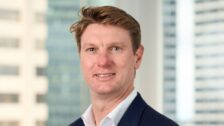Fiduciary mindset, nuance key to success in real estate
Many people at the top of funds management travel around the world to work in various locations, to build a career. For Max Swango, managing director and global head of client portfolio management with Invesco Real Estate, that career came to him, in his home town of Dallas, Texas, where he is based.
But Swango was far from passive in that; he worked assiduously to help build the business that now manages more than US$90 billion ($117 billion) worth of property assets, from 21 offices around the world. He just hasn’t had to leave home to do it – apart from earning a BBA with a double major in real estate and finance from The University of Texas at Austin, 320 kilometres away, and a four-year stint from 1995 to 1999, overseeing the firm’s West Coast investment activity from its San Francisco office.
“Dallas has always been a property town,” says Swango. “Growing up in Dallas in the 1980s, the two big industries in Texas then were real estate, and oil and gas. But by the time I got out of college, in 1988, the country was in recession, and Texas was in depression. There were very few people of my age in the United States in the real estate business.”
Swango landed a job with a real estate conglomerate headquartered in Dallas, called Lomas & Netton, in 1988. “I was very fortunate to be hired by Lomas. Lomas was a huge real estate firm that eventually went bankrupt in 1990. At the time, as a trainee, Swango was rotating through the firm’s client advisory group. “It was providing real estate investment advisory services to precisely one client, which happened to be a pension fund, the Teacher Retirement System of the State of Texas – whom we still have as a client It was a very small group, about US$500 million of assets under management. I was only there for a couple of years before it went bankrupt, in 1990.”
But we were lucky: we found a small stock and bond money manager in Atlanta called Invesco, which managed US$36 billion, and we convinced Invesco to buy us from Lomas. They did, in 1990.”
Invesco now had a real estate business. Swango and his team have taken that to the world.
“We talked for a long while about expanding, and how we might go about that. I was the first one to leave Dallas, when I moved to San Francisco in 1995 and opened our first office outside Dallas. That was a big test case, because we liked having everybody in one room, basically, so having someone in a different office was a new thing for us in 1995. But we wanted to have that local presence in order to source investment opportunities.
“That worked really well in San Francisco, so we duplicated it next in the Northeast; and then again, later, in Newport Beach in Southern California. That was in the late 1990s.”
With the model honed, it was time for overseas expansion. “In the late 1990s, we started having conversations about whether we should go global,” Swango says. “We decided that we wanted to go globally mainly because we felt that our clients were investing globally in stocks and bonds, and eventually they were going to want to invest globally in real estate. So, we hired a consultant, and sent him to London to go find people that we could build a real estate group around, in Europe. We bought two European real estate companies, one in 2001, one in 2003, and that started our European business.
“We started hiring a team in Asia in 2006, and then, in the global financial crisis in 2009, when AIG went bankrupt and was owned by the US government, we ended up buying AIG’s Asia platform, in early 2010.”
That is how the structure was built – but it isn’t how the Global Real Estate group was built. That comes down to culture.
“There’s no question, the last 20 years, a lot of what I have been doing has been helping to decide what the culture should be like in different countries around the world, and then integrating that into our business. That’s not as easy as it sounds, there’s a lot of work. Originally, we had this huge stable of clients in the United States, that we have great relationships with, and our vision was that we wanted our clients to be able to go to London, Munich, Paris, Hong Kong, Tokyo or Sydney, and feel like they were in Dallas or New York. We wanted the same culture, the same investment philosophy, the same strategies, just run by local people in each office. But getting the right people culturally, that’s a big business challenge.”
Different markets require local knowledge and approach, he says. “The nuances of investing, of actually closing deals, is very different even in the United States – we learned that you have to have New Yorkers in New York and you have to have California people in California. We knew that we couldn’t send a person from Dallas and tell them to go to London and start buying properties in Europe, or send them to Asia. You need to have Japanese people in Japan and Australians in Australia and Koreans in Korea and French in Paris. You’ve got have that local touch – because it’s very different,” Swango says.
But overlaid on that, very definitely, is the Invesco culture. “The fiduciary mindset, of investing other people’s money, of taking care of clients, is a unique culture that we overlay over the local teams, and I’ve spent a lot of time helping to build that into our overseas offices. Because this business is all about relationships. our job is not to sell anything – it’s to build a relationship, so that when you’re ready to invest in property, you want to invest with us, because you trust us.”
That commitment to culture extends to mentoring, which Swango says is an essential part of culture. I love to speak to our staff and share all the mistakes I’ve made in my career and try to help them so they can have successful careers here. We have a very formal mentorship program at Invesco Real Estate, and I’m a mentor in that – I’ve got an outstanding mentee at the moment who I think could be one of the people running this company in 10 or 20 years.”
Outside work, Swango says family, community, fitness, golf and sport are where he recharges. “I think your work-life balance is always evolving. There was a long time when it was my wife, three kids and work; with my travel schedule, that was pretty much it, and if I could somehow fit in maintaining a golf game, that was part of it. But now that our three children are all away at the same college, about 45 minutes from Dallas, we get together as often as we can – I have season tickets to home football games at their college, and I’m also a season-ticket holder for the Dallas Cowboys (American football) and the Dallas stars (ice hockey).
“When we can, we love to travel together as a family. In December, we’re going to Patagonia, the Chilean part, and we’re going on a National Geographic-led trip to Antarctica, so that’s going to be a life highlight for all of us,” he says.











